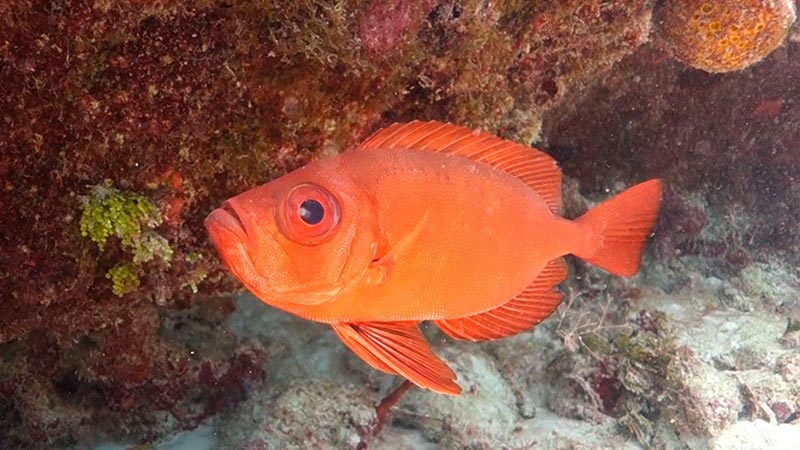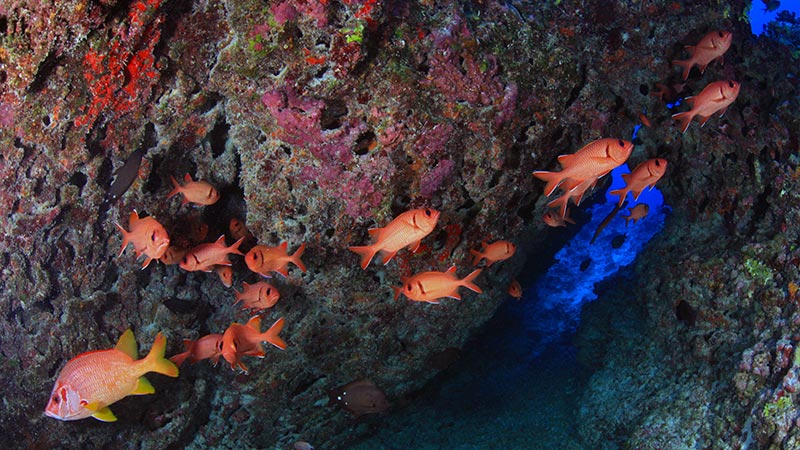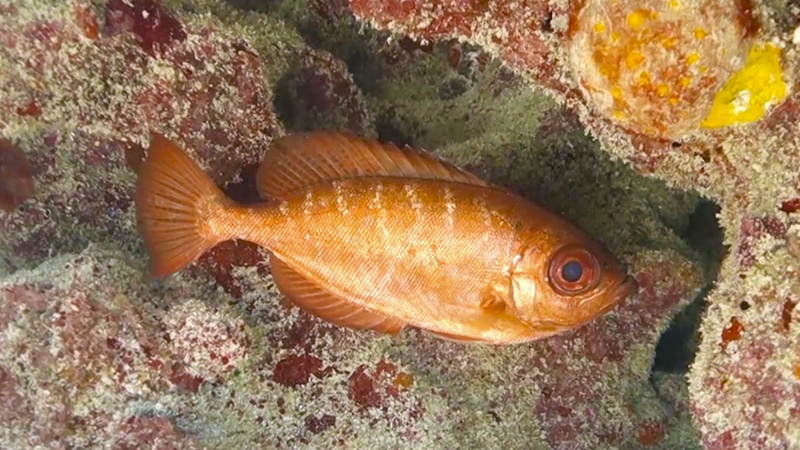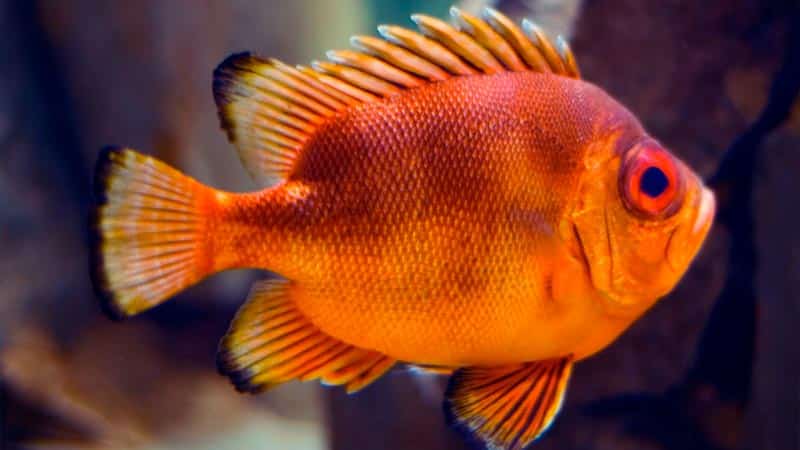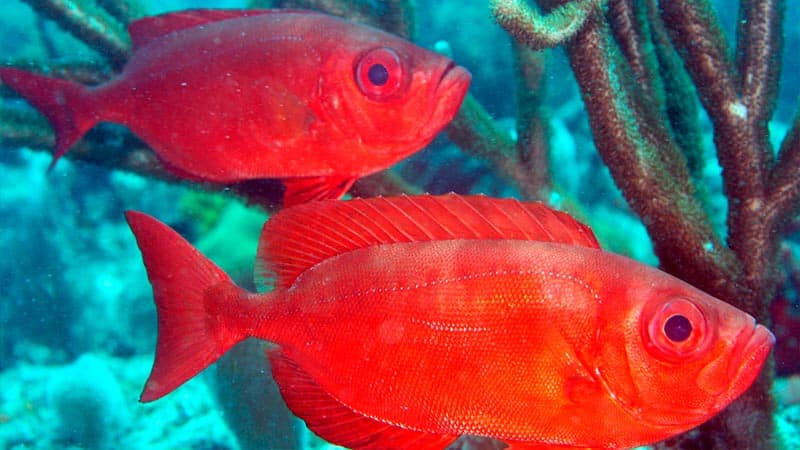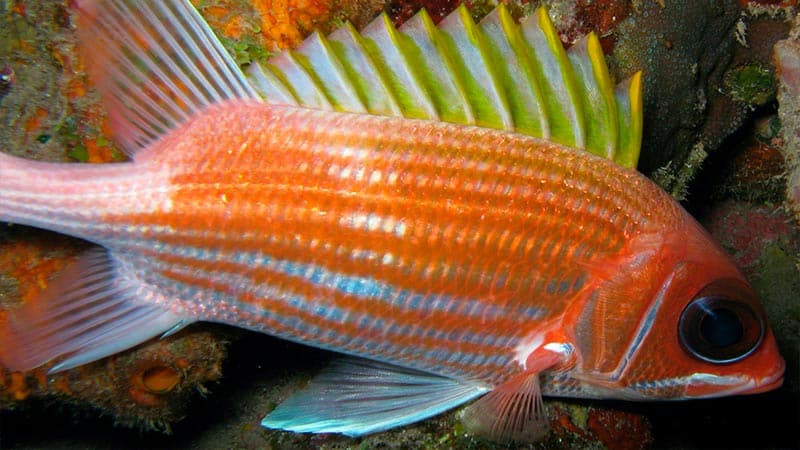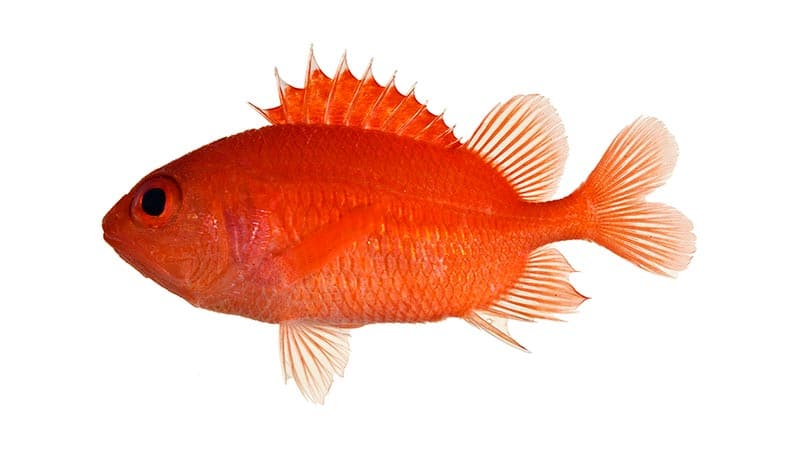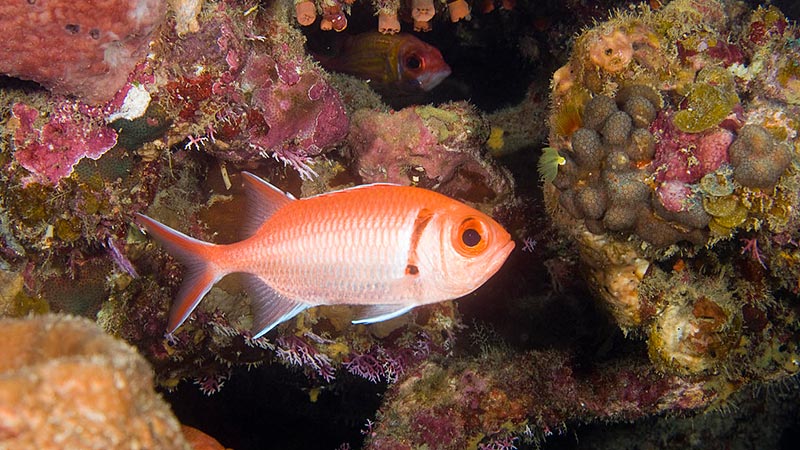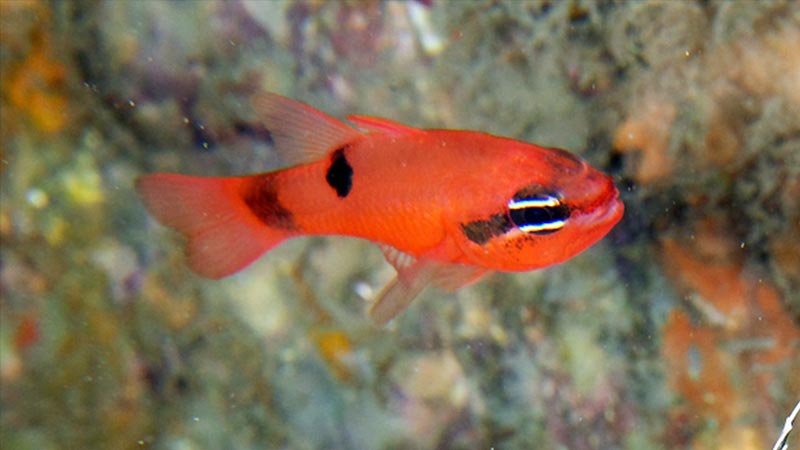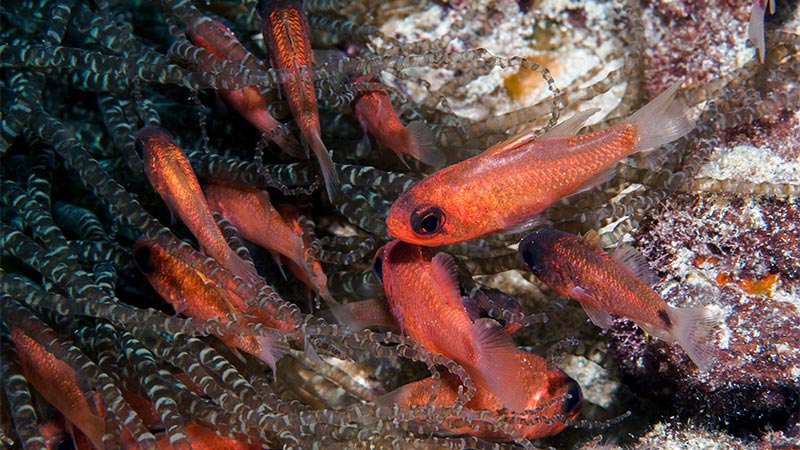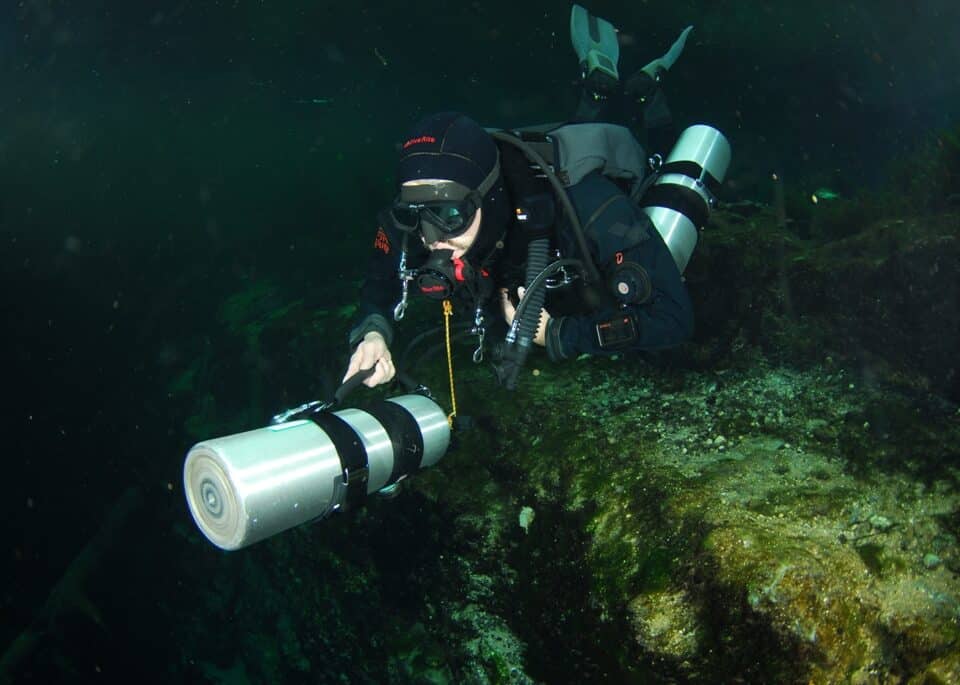2. Squirrel-like Red Fish with Big Eyes
As the sun sets and darkness envelops the Caribbean waters, an intriguing family of squirrelfish emerges, capturing the attention of discerning divers with their striking features and enigmatic behavior.
Holocentridae, commonly known as squirrelfish or soldierfish, belong to the order Beryciformes. Their large eyes and presence in the vibrant Caribbean reefs make them a spectacle worth exploring.
Anatomy of Eyed Squirrelfish
Members of this fish family are known for their reddish coloration and big eyes, which resemble those of squirrels. Additionally, they possess an elongated dorsal fin that bears some resemblance to the tails of their terrestrial cousins.
Their slender body stripes, sometimes white and other times golden-yellow, add a charming touch to their already remarkable appearance. Although they share similarities, each species boasts unique characteristics that allow for easy distinction.
Young squirrelfish, with their big eyes and slender, silvery bodies, often stay hidden, making sightings of these juveniles truly special encounters.
Big Eye Red Squirrelfish Behavior
Squirrelfish primarily feed on crustaceans and other small marine organisms. Some species of this bigeye fish family are known for their distinctive sounds that resonate in the ocean and are often audible to attentive divers.
These fish thrive in tropical and subtropical waters of the Atlantic, Indian, and Pacific Oceans. During the day, they love to hang out around coral reefs, caves, and rocky crevices at depths ranging from 10 to 200 meters, and sometimes even deeper!
However, be cautious! Some species of these big-eyed fish are a bit territorial and don’t take kindly to intruders, especially those who behave similarly. So, avoid getting into trouble in their territory!
Big Eyed Red Squirrelfish Reproduction
An underwater fertilization party occurs from January to March and again in the fall. Female squirrelfish release their eggs into the water like confetti, while male squirrelfish release their sperm nearby to ensure the party continues.
After this exciting festival of external fertilization, the eggs develop and hatch into tiny larvae that glide and swirl in the water column. The larvae eventually metamorphose into juveniles and then adults, ready to join the squirrelfish gang on the reef.
As divers venture into the mysterious depths of the Caribbean, the opportunity to witness the intricate world of these bigeye fish presents itself as a captivating exploration.




